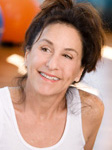Pilates, Meditation and Qigong for a stronger,
more relaxed you!
By Kristi Camier
As a Pilates
devotee, I have noticed how this practice compliments and enriches two of my
life passions, Meditation and Qigong. During Pilates, I connect with my
breath and body while doing the movements, as with Qigong (pronounced Chee
Kung). For those of you who are new to Qigong, it consists of slow, meditative movements that stretch and
strengthen muscles (sound familiar Pilates faithfuls?). Through
focused movement of your body’s energy you can achieve a relaxed state of
mind. We all can use a little of that! Another huge benefit is this
activates self-healing properties that ancient Chinese texts call the “healer
within”. It is so empowering and easy to take care of your health in
a matter of minutes daily.
Qigong is only one of many kinds of meditative
practices. In the past, meditation conjured up thoughts of an Ashram
in India somewhere. Now in our fast paced life, filled with to-do
lists, more and more people are reaping the benefits by simply taking a
few minutes a day to achieve a peaceful state of mind. Literally
hundreds of scientific studies have discovered the impact on the brain as well
as on the body. This results in profound short and long-term
psychological and physiological changes. The great part is that you
only need a few minutes a day to reap the benefits.
I am a Mom and
used to have an intense full time corporate job, so I truly understand how
challenging it can be to take time for ourselves. As the years have
gone by, I realize that I need to put that oxygen mask on myself first before
helping others. I believe that the quality of our life is the quality
of our health and relationships. One of the most important
relationships is the one you have with yourself. Pilates, Meditation and
Qigong can help you discover a calm and steady mind housed in a strong and
powerful body


